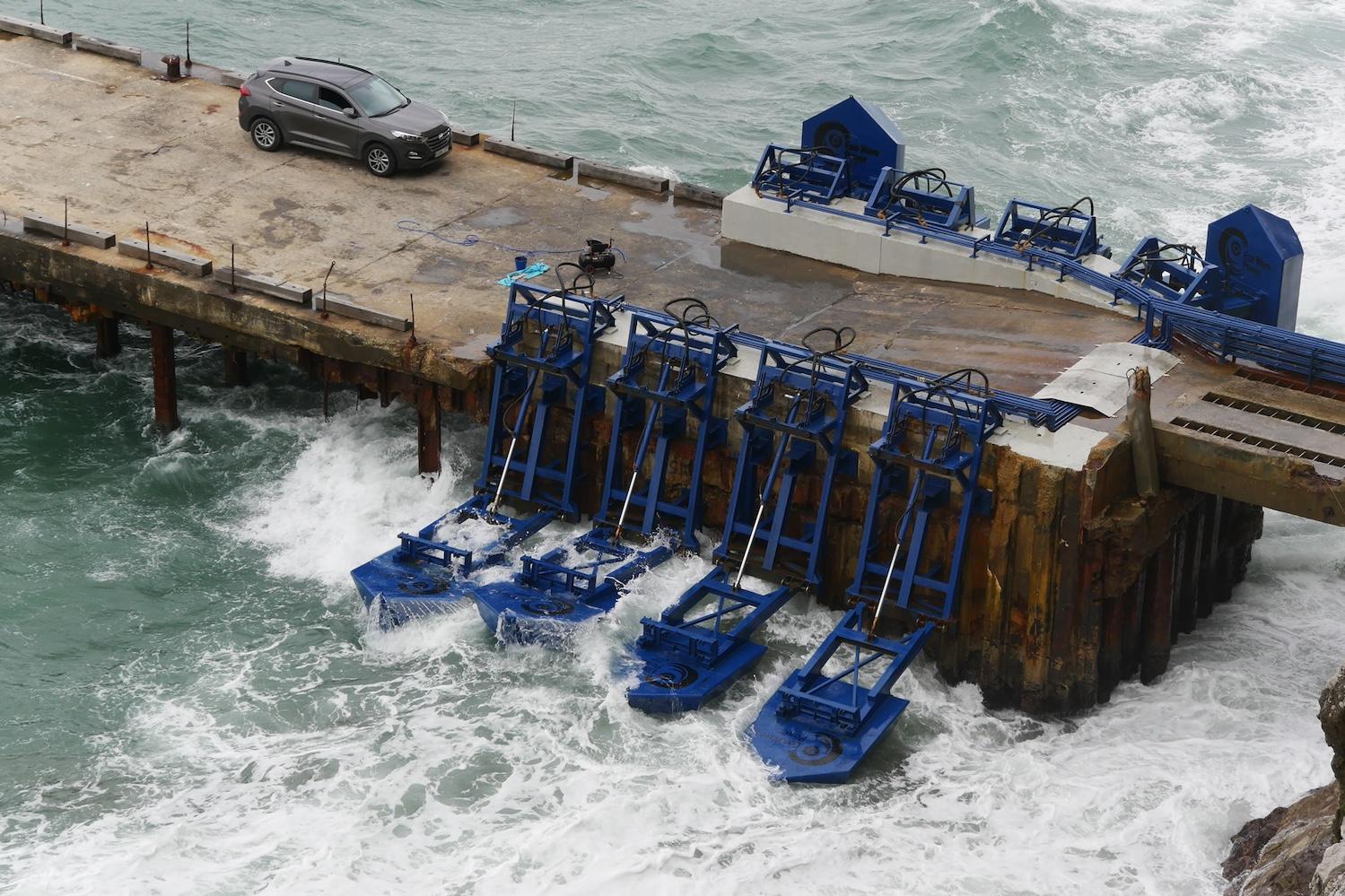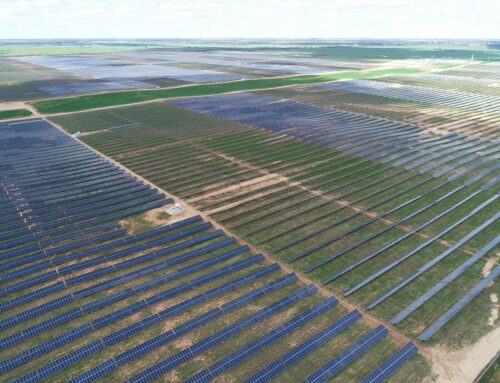Wave Energy: An Untapped Resource for Coastal Communities
October 2, 2024

The wave energy company Eco Wave Power attaches its converters to breakwaters and other existing shoreline infrastructure, offering one example of how the low-profile technology can work for coastal communities. (Image courtesy of Eco Wave Power.)
Renewable energy can be a challenge for businesses with a foothold in coastal communities. Nearby land for solar arrays and wind turbines is scarce, and new transmission lines for faraway renewable resources are expensive. One emerging option is wave energy. The potential payoff is enormous, but business stakeholders need to be aware of the obstacles, too.
The enormous potential of wave energy
Wave energy converters are mechanical devices that move with the motion of waves. Some are configured like buoys. Others are designed to be tethered to barges, or attached to seawalls and other coastal infrastructure. Regardless of their differences, all of these devices capture motion in the form of kinetic energy and transfer it to a generator to produce electricity.
The oceans are vast and the motion of waves is constant, opening up a significant opportunity to harvest renewable energy from the sea on a predictable, 24/7 basis. Measuring the amount of ocean wave energy potential is a work in progress, but the most recent assessment of the United States Energy Information Administration cites a figure of up to 2.64 trillion kilowatt-hours. To put that in perspective, if the U.S. wave energy sector was fully built out in 2023 it would have accounted for roughly 63 percent of the total utility-scale electricity generation in the country.
For all its potential, this is considered an emerging technology. Innovators are still trying to find a commercial-worthy balance between cost and efficiency. Because there are so many different variations on the technology, certification and standardization are slow to develop. Engineering a mechanical device that can withstand saltwater and ocean storms adds another layer of complication.
Still, years of research and testing are paying off. A global commercial wave energy industry is taking shape and interest in it is materializing on the user side, with seaports being one likely area of early adoption.
Another challenge for advocates
Overcoming the technology challenges is just one hurdle. As amply demonstrated by the experiences of wind and solar developers, renewable energy projects face opposition from local critics and fossil energy stakeholders, too.
In terms of offshore energy development, wave energy does have one significant advantage. Coastal communities routinely raise aesthetic objections to the size and height of offshore wind turbines, but wave energy devices sit close to the surface of the water, alleviating those concerns.
Still, wave energy advocates are not taking community acceptance for granted. Researchers at the University of Michigan, for example, received a $3.6 million grant from the National Science Foundation that focuses on community engagement for potential projects at two locations, Beaver Island in Michigan and Nags Head in North Carolina.
The multi-institution project aims to create a platform for providing stakeholders with insights into the relationship between wave energy and the needs and concerns of coastal and island communities.
“We need to develop a method to holistically assess wave energy devices, and that’s something that can’t be done by one person with one area of expertise working individually,” said Lei Zuo, the lead principle investigator on the project and an engineering professor at the University of Michigan.
Community engagement is the key to the whole project. “For Beaver Island, wave energy might be a pathway to increased energy security and independence from expensive diesel for the island’s back-up generators,” according to the university.
Community priorities at Nags Head may be substantially different. At that location, one potential need could be emergency power after hurricanes and other catastrophes, particularly in regards to running water desalination equipment.
With community input, the researchers will be able to see whether their assumptions are correct. “Coastal communities often know more about what is happening locally on the coast and about what is likely to work for their communities,” said Eric Wade, an assistant professor of coastal studies at East Carolina University who is participating in the project.
“Without that community-centric design, renewable energy projects are likely to face terminal pushback,” according to the University of Michigan.
Next steps for wave energy
Economic development and net zero planning also fall under the umbrella of community needs. The energy needs of tourism, recreation, and other coastal industries like aquaculture may encourage communities to consider making space for wave energy in their decarbonization roadmap.
Keep an eye on the U.S. Department of Energy, which is supporting innovators with funding and technical assistance. The department recently announced its largest ever round of funding for wave energy, totaling up to $112 million.
“This investment will help identify and mature high-potential WEC [wave energy converter] technologies, reduce financial risks for developers and incentivize investors, progress technologies at smaller scales while developing toward utility scale, and increase learning for installation, operations and maintenance,” according to the Department of Energy.
In particular, the department is looking for proposals related to coastal community needs such as water treatment. At-sea applications including aquaculture and marine carbon dioxide removal are also targeted. In addition to these decentralized use cases, the department is also encouraging proposals that can be applied to utility grids.
It’s planning a five-year timeline for the new program, culminating in commercial-ready wave energy converters. Coastal economy stakeholders can prepare now by reaching out to communities and engaging in discussions about local needs, priorities and aspirations for the future.
Search
RECENT PRESS RELEASES
Related Post




